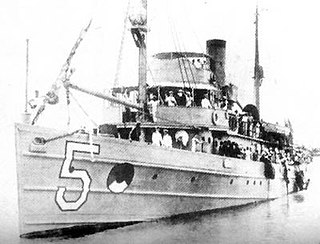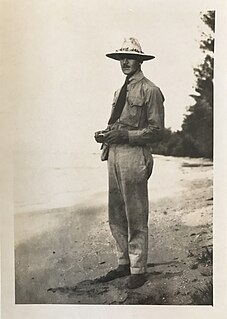Related Research Articles

The Polynesian narrative or Polynesian mythology encompasses the oral traditions of the people of Polynesia together with those of the scattered cultures known as the Polynesian outliers. Polynesians speak languages that descend from a language reconstructed as Proto-Polynesian - probably spoken in the Tonga - Samoa area around 1000 BC.
In Hawaiian mythology, Kaulu is a trickster god who killed goddess Haumea at Niuhelewai, by catching her in a net obtained from Makali’i. He then killed Lonokaeho, also called Piokeanuenue, king of Ko'olau, by singing an incantation. Kaulu is known for being extremely powerful and strong, both physically and with magic, and he had many adventures in Hawaiian mythology.

Menehune are a mythological dwarf people in Hawaiian tradition who are said to live in the deep forests and hidden valleys of the Hawaiian Islands, hidden and far away from human settlements.
In the traditions of ancient Hawaiʻi, Kanaloa is a god symbolized by the squid or by the octopus, and is typically associated with Kāne. It is also an alternative name for the island of Kahoʻolawe.

In Hawaiian mythology, Laka is the name of two different popular heroes from Polynesian mythology.. Lengthy legends of their exploits extend throughout the islands, and the kings of Tahiti and Hawaiʻi claimed them as their ancestors.

In Hawaiian mythology, Kamapuaʻa is a hog-man fertility superhuman associated with Lono, the god of agriculture. The son of Hina and Kahikiula, the chief of Oahu, Kamapuaʻa was particularly connected with the island of Maui.

Alyxia stellata, known as maile in Hawaiian, is a species of flowering plant in the dogbane family, Apocynaceae, that is native to Hawaii. It grows as either a twining liana, scandent shrub, or small erect shrub, and is one of the few vines that are endemic to the islands. The binomial nomenclature means "chain resembling olive" in Latin. The leaves are usually ternate, sometimes opposite, and can show both types on the same stem. Flowers are quite inconspicuous and have a sweet and light fragrance of honey. The bark is most fragrant and exudes a slightly sticky, milky sap when punctured, characteristic of the family Apocynaceae. The entire plant contains coumarin, a sweet-smelling compound that is also present in vanilla grass, woodruff and mullein. Fruit are oval and dark purple when ripe. Maile is a morphologically variable plant and the Hawaiian names reflect this.
Tuamotuan, Paʻumotu or Paumotu is a Polynesian language spoken by 4,000 people in the Tuamotu archipelago, with an additional 2,000 speakers in Tahiti.
In Hawaiian mythology, the Nawao are a legendary people, a wild, large-sized hunting people, descended from Lua-nu'u. Other sources suggest that the Nawao were present in Hawaii before the Menehune who are thought to have driven them out or destroyed them. However, folklorist Katherine Luomala believes that the legends of the Menehune and similar creatures are a post-European contact mythology.
In the Tuamotu Rata cycle, Tahiti-tokerau was a water-nymph whom Vahi-vero marries. She was abducted by Puna, king of the underworld and rescued by her husband. They then become parents of Rata.
In Tahitian mythology, Vahieroa is a son of Tafa'i and his wife Hina, and is born at his father's house in the Tapahi hills of Mahina in north Tahiti. He weds Maemae-a-rohi, sister of the ruling chief Tumu-nui.

The TanagerExpedition was a series of five biological surveys of the Northwestern Hawaiian Islands conducted in partnership between the Bureau of Biological Survey and the Bishop Museum, with the assistance of the U.S. Navy. Four expeditions occurred from April to August 1923, and a fifth in July 1924. Led by Lieutenant Commander Samuel Wilder King on the minesweeper USS Tanager (AM-5), and Alexander Wetmore directing the team of scientists, the expedition studied the plant animal life, and geology of the central Pacific islands. Noted members of the team include archaeologist Kenneth Emory and herpetologist Chapman Grant.

Kenneth Pike Emory was an American anthropologist who played a key role in shaping modern anthropology in Oceania. In the tradition of A. L. Kroeber and other pioneering anthropologists who trained him, Emory's works span all four major fields of anthropology: archaeology, physical anthropology, ethnography, and linguistics. With fellow scientists Gerrit P. Wilder, Honolulu botanist, and Mrs. Wilder, historian; Dr. Armstrong Sperry and Dr. Stanley Ball, he was part of the Bishop Museum scientific research party who explored the South Pacific on the schooner Kaimiloa.

Hawaiian religion encompasses the indigenous religious beliefs and practices of Native Hawaiians. It is polytheistic and animistic, with a belief in many deities and spirits, including the belief that spirits are found in non-human beings and objects such as other animals, the waves, and the sky.
The Mangarevan expedition of 1934 was a scientific expedition to investigate the natural history of the farthest southeastern islands of Polynesia, including Mangareva. It was a comprehensive natural history expedition of a kind more common during the previous century. Sponsored by the Bernice P. Bishop Museum of Honolulu, Hawaii and led by the malacologist Charles Montague Cooke Jr., its research team included the ethnologists Kenneth P. Emory and Peter H. Buck, the botanists Harold St. John and F. Raymond Fosberg, the malacologists Donald Anderson and Yoshio Kondo, and the undergraduate entomologist E. C. Zimmerman. After visiting 56 islands on a voyage of over 14,000 kilometers over a period of six months, they returned with an enormous quantity of data, including perhaps the richest collection ever made of plants in Polynesia.
Yosihiko H. Sinoto was a Japanese-born American anthropologist at the Bishop Museum in Honolulu, Hawaii. He is known for his anthropological expeditions throughout the Pacific, particularly Hawaii and French Polynesia.

In Hawaiian mythology, Kū is one of the four great gods. The other three are Kanaloa, Kāne, and Lono. Some feathered god images or akua hulu manu are considered to represent Kū. Kū is worshiped under many names, including Kū-ka-ili-moku, the "Snatcher of Land". Rituals for Kūkaʻilimoku included human sacrifice, which was not part of the worship of other gods.
The Bayard Dominick expedition was a 1920 scientific expedition to the Pacific islands of Polynesia, with four teams sent to compile archaeological and anthropological surveys of the Marquesas, Tonga, Austral Islands, and Hawaiʻi.
There have been changing views about initial Polynesian discovery and settlement of Hawaii, beginning with Abraham Fornander in the late 19th century and continuing through early archaeological investigations of the mid-20th century. There is no definitive date for the Polynesian discovery of Hawaii. Through the use of more advanced radiocarbon methods, taxonomic identification of samples, and stratigraphic archaeology, during the 2000s the consensus was established that the first arrived in Kauai sometime around 1000 AD, and in Oahu sometime between 1100 AD and 1200 AD. However, with more testing and refined samples, including chronologically tracing settlements in Society Islands and the Marquesas, two archipelagoes which have long been considered to be the immediate source regions for the first Polynesian voyagers to Hawaii, it has been concluded that the settlement of the Hawaiian Islands took place around 1219 to 1266 AD, with the paleo-environmental evidence of agriculture indicating the Ancient Hawaiian population to have peaked around 1450 AD around 140,000 to 200,000.

Robert Thomas Aitken was an American anthropologist known for his work in Oceania while at the Bishop Museum in Hawaiʻi.
References
- M. Beckwith, Hawaiian Mythology (University of Hawaii Press: Honolulu) 1970.
- J.F. Stimson, The Cult of Kiho-tumu (Bernice P. Bishop Museum Press: Honolulu), 1933.
- E. Sykes, A. Kendall, Who's Who in Non-Classical Mythology (Routledge: London), 2003